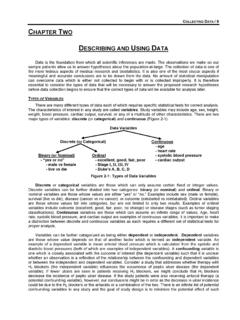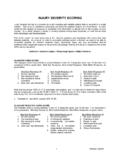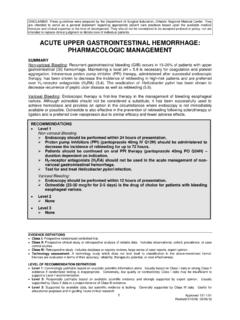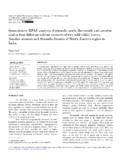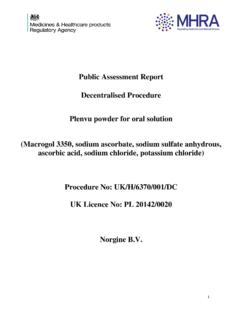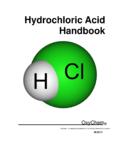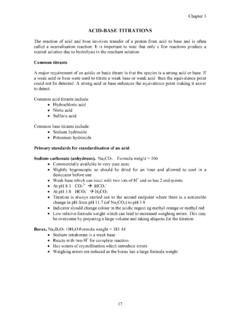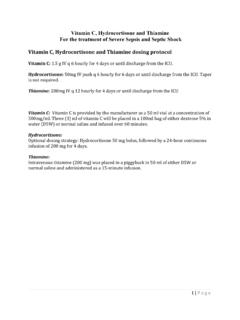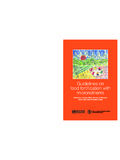Transcription of ASCORBIC ACID (VITAMIN C) INFUSION IN THE …
1 DISCLAIMER: These guidelines were prepared by the Department of Surgical Education, Orlando Regional Medical Center. They are intended to serve as a general statement regarding appropriate patient care practices based upon the available medical literature and clinical expertise at the time of development. They should not be considered to be accepted protocol or policy, nor are intended to replace clinical judgment or dictate care of individual patients. EVIDENCE DEFINITIONS Class I: Prospective randomized controlled trial.
2 Class II: Prospective clinical study or retrospective analysis of reliable data. Includes observational, cohort, prevalence, or case control studies. Class III: Retrospective study. Includes database or registry reviews, large series of case reports, expert opinion. Technology assessment: A technology study which does not lend itself to classification in the above-mentioned format. Devices are evaluated in terms of their accuracy, reliability, therapeutic potential, or cost effectiveness. LEVEL OF RECOMMENDATION DEFINITIONS Level 1: Convincingly justifiable based on available scientific information alone.
3 Usually based on Class I data or strong Class II evidence if randomized testing is inappropriate. Conversely, low quality or contradictory Class I data may be insufficient to support a Level I recommendation. Level 2: Reasonably justifiable based on available scientific evidence and strongly supported by expert opinion. Usually supported by Class II data or a preponderance of Class III evidence. Level 3: Supported by available data, but scientific evidence is lacking. Generally supported by Class III data.
4 Useful for educational purposes and in guiding future clinical research. 1 Approved 11/14/06 Revised 11/29/2013 ASCORBIC acid ( vitamin C) INFUSION IN THE RESUSCITATION OF BURN PATIENTS SUMMARY Free radicals have emerged as important mediators of burn injury at the cellular level. Continuous ASCORBIC acid ( vitamin C) INFUSION appears to be a useful adjunct in minimizing the effects of free radical injury and reduces fluid resuscitation requirement among burn patients. INTRODUCTION Effective fluid resuscitation of the burn patient is the cornerstone of initial patient management.
5 As research has advanced concerning the biochemical basis of burn trauma, the role of free radicals in potentiating injury at the cellular level has become better understood (1). ASCORBIC acid ( vitamin C) has been investigated as a means to minimize free radical injury and reduce fluid volume requirements during burn resuscitation. LITERATURE REVIEW The Role of Free Radicals Following burn injury, an up-regulation of xanthine oxidase triggered by histamine leads to the formation of oxygen free radicals resulting in significant cell injury.
6 This is enhanced by impairment in native RECOMMENDATIONS Level 1 None Level 2 Consider a continuous ASCORBIC acid ( vitamin C) INFUSION (66 mg/kg/hr for 24 hours) in burn patients sustaining injury 30% total body surface area (TBSA). INFUSION should be begun within six (6) hours of burn injury. The fluid volume associated with the ASCORBIC acid INFUSION should be included in the total volume of fluid resuscitation calculated according to the Parkland formula. Level 3 Total fluid volumes should be adjusted to maintain a urine output of 50-100 ml/hr.
7 Once ASCORBIC acid INFUSION is begun, point of care (POC) glucose testing results should be considered inaccurate for at least 36 hours after completing the INFUSION . Blood glucose should be monitored using serum glucose levels whenever ASCORBIC acid infusions are in use. Prior to resuming POC glucose testing, POC and serum glucose levels must be demonstrated to agree. 2 Approved 11/14/06 Revised 11/29/2013 antioxidant mechanisms and additional free-radical production by neutrophils (1,2). This increase in xanthine oxidase at presentation has been shown to correlate with mortality following severe burn (3).
8 ASCORBIC acid INFUSION - Animal Studies A randomized, double-blinded study demonstrated a significant reduction in net fluid balance and plasma lipid peroxidation among sheep sustaining a 40% TBSA burn resuscitated with either Lactated Ringer s solution or hypertonic saline in conjunction with high-dose INFUSION of ASCORBIC acid (4). ASCORBIC acid INFUSION Human Studies A randomized, prospective study by Tanaka et al. evaluated the use of continuous ASCORBIC acid INFUSION in 37 burn patients with greater than 30% TBSA burns.
9 Investigators compared resuscitation fluid volume requirements and overall edema formation. A significant reduction in fluid volume requirements, weight gain, and wound edema was noted, along with an overall improvement in pulmonary function, demonstrated by a significant reduction in mechanical ventilation days (5). A retrospective review by Kahn et al. reported their experience comparing resuscitation with vitamin C (VC) INFUSION to Lactated Ringers (LR) alone guided by Parkland formula in 33 patients (17 with VC and 16 with LR).
10 The endpoints of resuscitation were stable hemodynamics and urine output (> ) during the first 24 hrs in both groups. The patients in each group were matched for age, %TBSA, APACHE-II score , age, and gender. They noted decreased total fluid requirements, need for vasopressor use, and decreased time on vasopressor when used in the VC group. There was no significant difference in Hct, PEEP, FiO2, pneumonia, inhalational injury, renal failure, or mortality among the two groups (6). Guidelines for INFUSION The available Class I data indicates ASCORBIC acid should be infused at 66 mg/kg/hr for the initial 24 hours of burn resuscitation.


